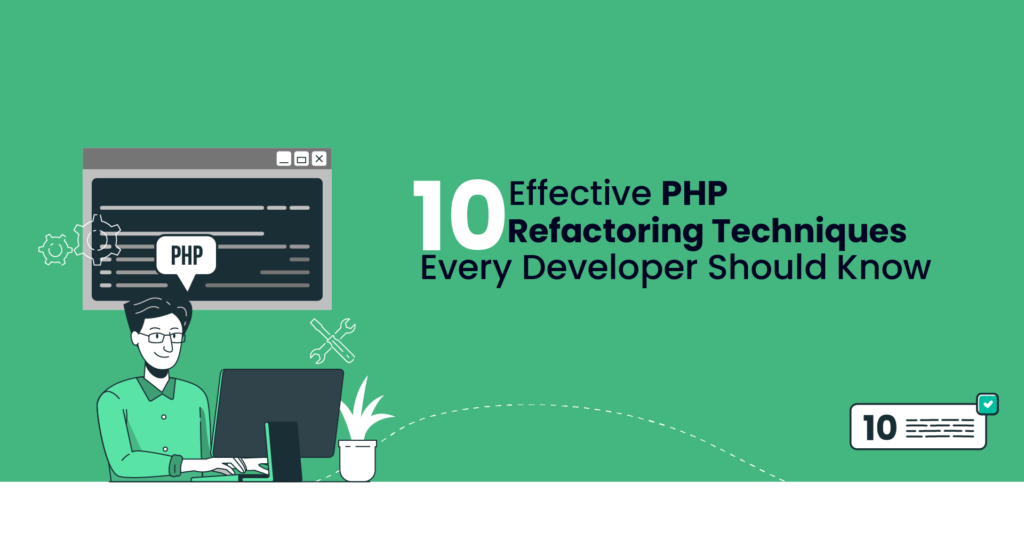Key Highlights
- Building an e-commerce website is a great way for small businesses to establish their online presence and reach a wider target audience.
- By creating an online store, businesses can attract new customers and increase their sales and revenue.
- To start an e-commerce website, you’ll need to choose the right platform, prepare your business model, and customize your website to provide an excellent user experience.
- It’s important to set clear goals for your e-commerce business, including identifying your target audience, defining your customer base, and understanding sales tax requirements.
- Selecting the right e-commerce platform is crucial for the success of your online store, and there are several popular options available for beginners.
- Maintaining and growing your e-commerce website involves analyzing website performance, engaging with customers, and implementing effective marketing strategies.
Introduction
Embark on your e-commerce journey with confidence as we delve into the realm of online business. Today, setting up an online store is more accessible than ever, with a myriad of tools and resources at your disposal. Dive into the world of digital transactions, product listings, and customer service as you explore the potential of e-commerce. Discover the intricacies of payment processing, optimizing user experience, and leveraging marketing strategies to carve your niche in the digital marketplace. Let’s transform your business approach and tap into the vast opportunities of e-commerce.
Understanding E-commerce Websites
E-commerce websites transform the way businesses operate in the digital age. Understanding the intricacies of these online platforms is key to unlocking their full potential. From product listings to payment processing, every element plays a crucial role in engaging customers and driving sales. By grasping the dynamics of user experience and SEO tools, you can tailor your website to attract your target audience effectively. Harnessing the power of digital marketing and content strategies can elevate your online presence, leading to increased visibility and conversions. Embrace the essence of e-commerce websites to propel your business towards success.
The Evolution of Online Shopping
Over time, the evolution of online shopping has revolutionized the retail landscape. Consumers today are no longer solely reliant on physical stores; the convenience and accessibility of online shopping have reshaped the way people buy products. The rise of ecommerce websites has provided customers with a vast array of options at their fingertips, making shopping a seamless and efficient experience. Additonally, with the ability to browse and purchase items from the comfort of their homes, online shoppers enjoy the convenience of shopping anytime, anywhere, fueling the continuous growth of the e-commerce industry.
Why Start Your E-commerce Website?
Discover the benefits of starting your e-commerce website, from reaching a global audience to low startup costs. Unleash your entrepreneurial spirit and tap into the lucrative world of online retail!
Preparing for Your E-commerce Journey
Embarking on your e-commerce journey requires meticulous preparation. To set a solid foundation, arm yourself with essential tools like a reliable website builder and a secure payment gateway. Clearly define your e-commerce business goals to stay focused and motivated. Research your target audience and competition to tailor your strategies effectively. Leverage social media platforms and email marketing to reach potential customers. Remember, success in the online business world demands strategic planning and proactive decision-making. Moreover, by preparing diligently, you pave the way for a successful e-commerce venture.
Essential Tools and Resources You’ll Need
To effectively build an e-commerce website, you will require essential tools and resources. These include a reliable domain name that resonates with your brand, a robust e-commerce platform for seamless online transactions, and secure payment processing solutions to cater to customer preferences. Additionally, implementing SEO tools, social media integration, and email marketing capabilities can boost your online visibility and engage with potential customers. Having a user-friendly content management system will give you complete control over your website content, ensuring a seamless customer experience. Invest in the right tools from the start to set a strong foundation for your e-commerce success.
Setting Your E-commerce Business Goals
When setting your e-commerce business goals, it’s crucial to align them with your overall vision. Define clear objectives for sales targets, customer acquisition, and brand positioning. Utilize NLP strategies to enhance customer engagement and increase conversions. Establish measurable KPIs to track progress and continuously optimize your online store. By setting specific, achievable goals, you create a roadmap for success in the competitive e-commerce landscape. Embrace digital marketing tactics and leverage data-driven insights to drive growth and establish a strong online presence that resonates with your target audience. Furthermore, start your e-commerce journey strategically and watch your business thrive.
Here’s an article on 7 Winning B2B E-commerce Strategies for 2025, check it out!
Choosing the Right E-commerce Platform
When selecting the ideal e-commerce platform for your online store, consider factors such as user-friendliness, scalability, and customization options. Opt for a platform that aligns with your business goals and offers essential features like secure payment processing, responsive design, and seamless integration with popular social media platforms. Conduct thorough research to compare costs, features, and customer support services provided by different e-commerce platforms. By choosing the right e-commerce platform, you set a solid foundation for your online business’s success, ensuring a smooth and efficient experience for both you and your customers.
Popular E-commerce Platforms for Beginners
For beginners venturing into the realm of e-commerce, it’s crucial to select a platform that aligns with their needs. Among the popular choices are Shopify, known for its user-friendly interface and extensive app store, and WooCommerce, a WordPress plugin offering flexibility and customization options. Squarespace is another option, ideal for businesses focusing on design aesthetics and ease of use. These platforms provide intuitive tools for managing products, orders, and payments, empowering beginners to kickstart their online ventures seamlessly. Making the right choice here can set the stage for a successful e-commerce journey.
Comparing Costs and Features
When deciding on an e-commerce platform, comparing costs and features is crucial. Consider the pricing structure: monthly fees, transaction fees, and additional costs for extra services. Evaluate features like customization options, inventory management, and scalability to meet future needs. Look for user-friendly interfaces and built-in SEO tools to enhance visibility. Analyze payment processing fees and checkout options to ensure a smooth customer experience. By carefully comparing costs and features, you can select a platform that aligns with your budget and business requirements, setting a strong foundation for your online store’s success.
Additionally, check out an article on Tips for Improving E-commerce Accessibility & Inclusivity.

Step-by-step Guide to Building Your E-commerce Website
To start your online store, first, get a unique domain name that fits your brand. Then, pick an e-commerce platform that suits your goals. Design a user-friendly website with attractive product listings. Make sure to set up safe payment options and reliable shipping methods. Each step is vital for a smooth shopping experience. Focus on offering value and convenience throughout the process.
Step 1: Register Your Domain Name
Make your mark in the digital realm by securing a unique domain name that reflects your brand identity. Registering a domain is the first pivotal step towards establishing your online presence. A domain name serves as your virtual address, making it easier for customers to find and remember you. Choose a name that is catchy, relevant, and aligns with your business objectives. By owning a domain, you not only boost credibility but also safeguard your brand from imitation. Act now to claim your digital territory and kickstart your e-commerce journey with confidence.
Step 2: Select and Set Up Your E-commerce Platform
For your e-commerce venture, selecting the right platform is vital. Consider platforms like Shopify, WooCommerce, or BigCommerce, tailored for beginners. Evaluate features, scalability, and costs to align with your goals. With user-friendly interfaces and various customization options, these platforms offer seamless website setup. Look for integrated payment processing, secure hosting, and mobile responsiveness to enhance user experience. Prioritize platforms that support SEO tools and marketing integrations for growth. Make a confident choice that suits your business model and resonates with your target audience. Lastly, embrace the potential these platforms offer to realize your e-commerce aspirations.
Step 3: Designing Your E-commerce Website Layout
When creating your e-commerce website layout, focus on user experience to drive conversions. Design a visually appealing site that is easy to navigate, with clear product categories and search functionality. Utilize branding elements consistently across all pages for a cohesive look. Ensure that your layout is responsive and optimized for mobile devices to cater to a wider audience. Incorporate high-quality images and engaging product descriptions to captivate visitors. Hence, a well-designed layout can enhance trust and credibility, making customers more likely to complete their purchases.
Step 4: Adding Products to Your Website
When enhancing your e-commerce site, adding products strategically is crucial. Engaging product descriptions with relevant keywords boosts SEO. Effective product pages with clear images and concise details entice customers. Utilize categories and tags for easy navigation through your inventory. Implementing a user-friendly shopping cart and secure payment processing enhances the overall shopping experience. Offer various payment options to cater to diverse customer preferences. Furthermore, ensure seamless integration of your inventory management system. Consistency in updating new products maintains customer interest and drives sales, fostering growth for your online business.
Step 5: Setting Up Payment Methods
When setting up payment methods for your e-commerce website, consider offering various options to cater to diverse customer preferences. Ensure secure credit card processing to build trust with your customers. Integrate reliable payment gateways for seamless transactions. Include popular choices like PayPal, Stripe, or Square to accommodate different payment styles. Simplify the checkout process by enabling one-click payments for returning customers. Moreover, by providing convenient and secure payment methods, you enhance user experience and increase the likelihood of successful transactions, contributing to the success of your online store. Make payment setup a smooth experience for both you and your customers.
Step 6: Implementing Shipping Solutions
When setting up your e-commerce website, implementing shipping solutions is crucial for a seamless customer experience. Integrating a reliable shipping system ensures timely delivery, boosting customer satisfaction and retention. Consider options like real-time carrier rates for accurate shipping costs, order tracking for transparency, and easy returns management. Streamlining shipping processes with automation tools can save time and reduce errors. Offering multiple shipping methods caters to diverse customer needs, enhancing convenience. Prioritize a user-friendly interface for smooth navigation, making shipping details easily accessible. Seamless shipping solutions are key to building trust and loyalty with your online customers.
An article about Trust in E-commerce: Key to Success in Online Business might be of interest to you.
Customizing Your E-commerce Website
To truly stand out in the competitive world of e-commerce, customizing your website is paramount. Enhancing user experience with intuitive design and ensuring mobile optimization are not just choices; they are necessities in engaging and retaining customers. By tailoring your online store to cater to the preferences of your target audience, you also create a seamless shopping experience that encourages repeat visits and boosts sales. Remember, in the digital realm, first impressions are lasting. Make yours unforgettable by customizing every detail of your e-commerce site to mirror your brand’s identity.
Enhancing User Experience with Intuitive Design
To enhance user experience with intuitive design, focus on simplifying navigation, optimizing loading speeds, and ensuring mobile responsiveness. Utilize clear calls-to-action, high-quality visuals, and user-friendly layouts. Implement seamless checkout processes and intuitive search functions to facilitate easy browsing. Personalize user interactions, offer relevant product recommendations and provide detailed product information. A visually appealing and user-centric design can keep customers engaged, improve conversion rates, and build brand loyalty. In addition, emphasizes user experience to create a seamless online shopping journey that keeps customers coming back for more.
Mobile Optimization: A Must-Have
In today’s digital age, mobile optimization is not just a feature; it’s a necessity for any e-commerce website. With the increasing number of online shoppers using mobile devices, ensuring your website is fully responsive and user-friendly on smartphones and tablets is crucial. Mobile optimization enhances the overall user experience, improves your site’s visibility in search engine results, and boosts your potential for higher conversion rates. Ignoring mobile optimization could mean losing out on a significant portion of your target audience. Stay ahead of the competition by making mobile optimization a top priority in your e-commerce website development process.
Additionally, here’s an article on Augmented Reality in E-commerce: The Future of Shopping.
Launching Your E-commerce Website
Congratulations on reaching the exciting stage of launching your e-commerce website! This is where all your hard work and preparation culminate in bringing your online store to life. Before going live, conduct final meticulous checks to ensure a seamless user experience. Develop a pre-launch marketing strategy to create buzz around your online store, utilizing social media platforms, email marketing, and potentially paid ads to drive traffic. Engage with your target audience, entice new customers with promotions, and stand out in the competitive online market. Lastly, launch your website confidently and watch your e-commerce venture soar.
Final Checks Before Going Live
Ensure a seamless launch for your e-commerce website by conducting vital final checks. Test all payment processing functionalities thoroughly to guarantee smooth transactions. Double-check product descriptions, images, and pricing for accuracy. Verify that your shipping options are correctly configured and reflect your business model. Test the responsiveness of your website across various devices for optimal user experience. Conduct a comprehensive review of your SEO tools and content marketing strategies to boost your visibility in search results. Engage with test customers to gather feedback and fine-tune any remaining issues. Hence, these final checks are crucial to ensuring a successful online debut.
Marketing Strategies for Your New E-commerce Website
Utilize a mix of digital marketing tactics to promote your new e-commerce website effectively. Leverage social media platforms like Facebook and Instagram to engage with your audience and drive traffic. Implement email marketing campaigns to reach out to potential customers and keep them informed about new products or promotions. Optimize your website for search engines using SEO tools to improve visibility in search results. Consider using paid advertising such as Facebook ads to target specific audience segments. By implementing these marketing strategies, you can also attract more visitors and grow your customer base exponentially.
Maintaining and Growing Your E-commerce Website
Analyzing website performance is crucial for maintaining your e-commerce website’s success. By tracking user behavior and engagement metrics, you can optimize your site for better conversions. Engage with your customers through personalized communication and exceptional customer service to foster loyalty. Implement marketing strategies like content marketing and targeted social media campaigns to attract new customers. Continuous improvement based on customer feedback and market trends will help you grow your online business steadily. Stay proactive in keeping up with industry developments and adapting your strategies accordingly to ensure sustained growth.
Analyzing Website Performance
To ensure the success of your e-commerce venture, analyzing website performance is crucial. By delving into metrics such as conversion rates, bounce rates, and traffic sources, you gain valuable insights into customer behavior and the effectiveness of your strategies. Utilize tools like Google Analytics to track and measure these key performance indicators meticulously. This data-driven approach empowers you to make informed decisions to optimize your online store for increased sales and customer satisfaction. Continuous monitoring and adjustment based on performance analysis are paramount in driving growth and achieving your business goals. Lastly, enhance your online presence through dynamic analysis.
Engaging With Your Customers
Create a lasting connection with your customers by actively engaging with them. Respond promptly to inquiries and feedback, showing your dedication to exceptional customer service. Utilize social media platforms to interact with your audience, sharing updates and promotions to keep them engaged. Personalize the shopping experience through tailored recommendations based on their preferences and previous interactions. Encourage reviews and feedback to build trust and loyalty. By fostering a strong relationship with your customers, you not only increase retention but also pave the way for valuable word-of-mouth referrals and repeat business. Additionally, make customer engagement a priority in your e-commerce journey.
Conclusion
As you conclude your exciting journey into building an e-commerce website, remember that success lies in continuous learning and adaptation. Embrace the dynamic landscape of online business with confidence and strategic planning. In addition, stay updated on the latest trends in digital marketing to attract and retain customers effectively. Engage with your audience through social media platforms and email marketing, nurturing lasting relationships. Monitor your website performance using SEO tools, adjusting strategies to optimize results. Furthermore, by consistently refining your approach based on analytics and customer feedback, you pave the way for sustained growth and profitability in your e-commerce venture. Keep evolving and thriving in the ever-evolving digital marketplace.
Moreover, if you need assistance in building an e-commerce website for your business, don’t hesitate to get in touch for expert guidance.
Frequently Asked Questions
How much does it cost to build an e-commerce website?
To build an e-commerce website, costs can vary based on platform choice, design complexity, and additional features. Basic setups can range from $500 to $5000, while more intricate designs with custom features can exceed $20,000. Consider ongoing expenses like maintenance and marketing.
Can I build an e-commerce website by myself?
Yes, you can build an e-commerce website by yourself with the right tools and guidance. Follow our step-by-step beginner’s guide to create your online store efficiently. Learn about domain registration, platform selection, design, product listing, payment setup, and more to launch successfully.



